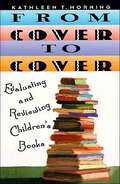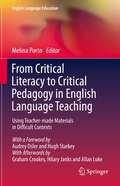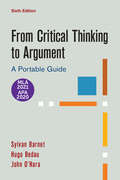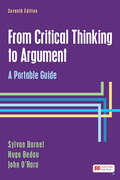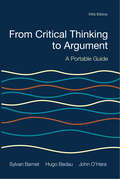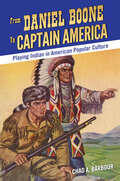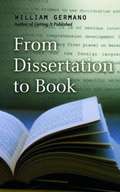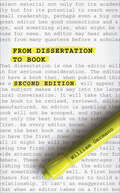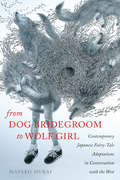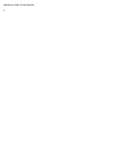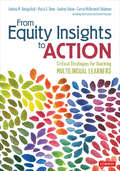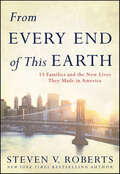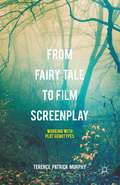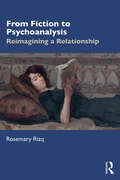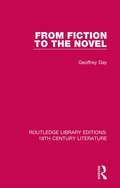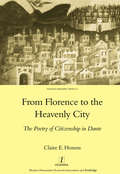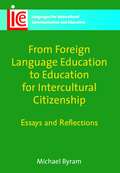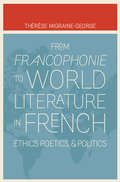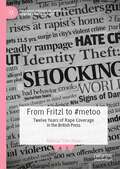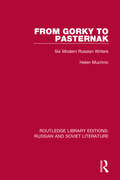- Table View
- List View
From Cover to Cover: Evaluating and Reviewing Children's Book
by Kathleen T. Horning“[A] beautifully written how-to manual, which also manages to present a treatise on what is best in children’s literature and why. . . . An excellent resource.” —BooklistThis revised edition of From Cover to Cover offers a fresh, up-to-date look at some of the best examples of children’s literature and also includes practical advice on how to write clearly articulated, reasoned opinions so that others can learn about books they have not yet read.An updated introduction explains how children’s books evolve from manuscripts into bound books and the importance of the many different parts of a book (jacket flaps, title page, copyright, etc.) and changes in the children’s book industry, such as the creation of two new major genre awards. In addition, the author demonstrates how to think about and critically evaluate several different genres of children’s books.Included are sections about books of information; traditional literature (myths, legends, tall tales, folktales); poetry, verse, rhymes, and songs; picture books; easy readers and traditional books; and fiction and graphic novels. There is also a concluding chapter on how to write reviews that are both descriptive and analytical, including a segment on children’s literature blogs.Updated material includes:•Information on the many changes in the children’s book industry•A section on genres•A section on children’s literature blogs•An introduction of two new major genre awards: the Robert F. Sibert Informational Book Award and the Theodor Seuss Geisel Award•And more than 90% of the books cited have been updated from the first edition to more recent publications!“[A] very complete resource that will continue to be the venerable reference tool.” —School Library Journal“An excellent guide.” —ALA Booklist
From Critical Literacy to Critical Pedagogy in English Language Teaching: Using Teacher-made Materials in Difficult Contexts (English Language Education #23)
by Melina PortoWith a Foreword by Hugh Starkey and Audrey Osler, and Afterwords by Graham Crookes, Hilary Janks and Allan Luke, this book promotes critical language education and illustrates how a critical agenda can be enacted in English language education in real classrooms. It presents four cases located in primary and secondary schools in the province of Buenos Aires in Argentina in contexts that can be characterised as vulnerable or difficult. It describes the possibilities, challenges and limitations of this critical agenda using students’ drawings, posters, leaflets, artwork, classroom activities and conversational data as foundation, and including the voices of local teachers in their classrooms. Importantly, these teachers used teacher-made, locally produced, critical post-method materials, described by the author of those materials in one of the chapters. In this way, the book offers a unique balance of researcher, teacher and materials writer voices. These materials are included in the book and can help language teachers around the world to introduce critical perspectives in their specific contexts. The book is appealing to researchers, classroom teachers, teacher educators, and materials writers and developers interested in critical language education.
From Critical Thinking To Argument: A Portable Guide
by Sylvan Barnet Hugo BedauFrom Critical Thinking to Argument is a very brief but thorough guide to critical thinking and argument. With only fifteen readings, this affordable guide can stand alone or complement an anthology. Comprising a condensed version of the text portion of the widely adopted Current Issues and Enduring Questions, it draws on the authors’ dual expertise in effective persuasive writing and comprehensive rhetorical strategies to help students move from critical thinking to argumentative and researched writing. This versatile text features treatment of classic and modern approaches including Aristotelian, Toulmin, and Rogerian argument, as well as a new chapter on analyzing pop culture texts. Like other volumes in the Bedford/St Martin’s popular series of Portable Anthologies and Portable Guides, From Critical Thinking to Argument offers the series’ trademark combination of high quality and great value for teachers of writing and their cost-conscious students.
From Critical Thinking to Argument with 2020 APA and 2021 MLA Updates: A Portable Guide
by John O'Hara Sylvan Barnet Hugo BedauThis ebook has been updated to provide you with the latest guidance on documenting sources in MLA style and follows the guidelines set forth in the MLA Handbook, 9th edition (April 2021).From Critical Thinking to Argument is a brief but thorough guide to argument at a great value. This versatile text gives students strategies for critical thinking, reading, and writing and makes argument concepts clear through its treatment of classic and modern approaches to argument, including Aristotelian, Toulmin, and Rogerian argument, as well as visual rhetoric. For today’s increasingly visual learners who are challenged to separate what’s real from what’s not, new activities and visual flowcharts support information literacy, and an appendix of practical Sentence Guides helps students incorporate the moves of academic writers into their own arguments. With just eighteen readings, this affordable guide can stand alone or complement an anthology.
From Critical Thinking to Argument: A Portable Guide
by Barnet Badau O’HaraFrom Critical Thinking to Argument is a brief but thorough guide to argument at a great value. This versatile text gives students strategies for critical thinking, reading, and writing and makes argument concepts clear through its treatment of classic and modern approaches to argument, including Aristotelian, Toulmin, and Rogerian argument, as well as visual rhetoric. For today’s increasingly visual learners who are challenged to separate what’s real from what’s not, new activities and visual flowcharts support information literacy, and an appendix of practical Sentence Guides helps students incorporate the moves of academic writers into their own arguments. With just eighteen readings, this affordable guide can stand alone or complement an anthology.
From Critical Thinking to Argument: A Portable Guide
by John O'Hara Sylvan Barnet Hugo BedauThis versatile text gives students strategies for critical thinking, reading, and writing and makes argument concepts clear through its treatment of classic and modern approaches to argument.
From Critical Thinking to Argument: A Portable Guide, 5th Edition
by John O'Hara Sylvan Barnet Hugo BedauFrom Critical Thinking to Argument is a very brief but thorough guide to critical thinking and argument. With only fifteen readings, this affordable guide can stand alone or complement an anthology. Comprising a condensed version of the text portion of the widely adopted Current Issues and Enduring Questions, it draws on the authors' expertise in persuasive writing and logical thinking, and now with new co-author John O'Hara, an expanded focus on critical thinking. It helps students move from critical thinking to argument and research. This versatile text features treatment of classic and modern approaches including Aristotelian, Toulmin, and Rogerian argument, as well as an expanded chapter on visual rhetoric. Like other volumes in the Bedford/St. Martin's popular series of Portable Anthologies and Portable Guides, From Critical Thinking to Argument offers the series' trademark combination of high quality and great value for teachers of writing and their cost-conscious students.
From Daniel Boone to Captain America: Playing Indian in American Popular Culture
by Chad A. BarbourFrom nineteenth-century American art and literature to comic books of the twentieth century and afterwards, Chad A. Barbour examines in From Daniel Boone to Captain America the transmission of the ideals and myths of the frontier and playing Indian in American culture. In the nineteenth century, American art and literature developed images of the Indian and the frontiersman that exemplified ideals of heroism, bravery, and manhood, as well as embodying fears of betrayal, loss of civilization, and weakness.In the twentieth century, comic books, among other popular forms of media, would inherit these images. The Western genre of comic books participated fully in the common conventions, replicating and perpetuating the myths and ideals long associated with the frontier in the United States. A fascination with Native Americans also emerged in comic books devoted to depicting the Indian past of the US In such stories, the Indian remains a figure of the past, romanticized as a lost segment of US history, ignoring contemporary and actual Native peoples.Playing Indian occupies a definite subgenre of Western comics, especially during the postwar period when a host of comics featuring a "white Indian" as the hero were being published. Playing Indian migrates into superhero comics, a phenomenon that heightens and amplifies the notions of heroism, bravery, and manhood already attached to the white Indian trope. Instances of superheroes like Batman and Superman playing Indian correspond with depictions found in the strictly Western comics. The superhero as Indian returned in the twenty-first century via Captain America, attesting to the continuing power of this ideal and image.
From Discriminating to Discrimination: The Influence of Language on Identity and Subjectivity
by Juliane Noack Napoles Alessandra Del Ré Patrícia FalascaThis book adopts a multidisciplinary approach to try to answer the question of how do we, as human beings, go from the socially neutral linguistic act of discriminating external stimuli to the socially loaded act of promoting social discrimination though language? This contributed volume brings together works presented at the international event “From Discriminating to Discrimination – The Influence of Language on Identity and Subjectivity”. This was an online event hosted and organized by the Brandenburg University of Technology (BTU), Germany, in partnership with São Paulo State University (UNESP), Brazil, that brought together lecturers from different universities around the world. During the event, linguists, psychologists, language teachers, social workers and pedagogues got together to discuss how discriminating can be recognized as a natural and important ability of the human being in the early stages of life and, after that, how to avoid discriminatory acts against others. The debates held online took into account the important and necessary dialogue between linguistics and other social sciences to discuss the role played by language as a form of building subjectivity and teaching practices that can contribute to minimize discrimination and promote integration and acceptance in a broad sense, understanding the preponderant role of language in recognizing what is different (discriminating), without diminishing or excluding it (discrimination). From Discriminating to Discrimination: The Influence of Language on Identity and Subjectivity will help linguists, psychologists, educators, social workers and a broad range of social scientists working with cognitive, linguistic and educational studies understand the path taken by differentiation, from the beginning of the child's language development – when discrimination (of sounds, gestures, etc.) is essential for the acquisition of language to occur –, until the moment when differentiation, discrimination, ceases to be an essential factor and becomes a means of social segregation.
From Dissertation to Book
by William P. GermanoAll new Phd's hope that their dissertations can become books. But a dissertation is written for a committee and a book for the larger world. William Germano's From Dissertation to Book is the essential guide for academic writers who want to revise a doctoral thesis for publication. The author of Getting It Published, Germano draws upon his extensive experience in academic publishing to provide writers with a state-of-the-art view of how to turn a dissertation into a manuscript that publishers will notice. Acknowledging first that not all theses can become books, Germano shows how some dissertations might have a better life as one or more journal articles or as chapters in a newly conceived book. But even dissertations strong enough to be published as books first need to become book manuscripts, and at the heart of From Dissertation to Book is the idea that revising the dissertation is a fundamental process of adapting from one genre of writing to another. Germano offers clear guidance on how to do just this. Writers will find advice on such topics as rethinking the table of contents, taming runaway footnotes, shaping chapter length, and confronting the limitations of jargon, alongside helpful timetables for light or heavy revision. With crisp directives, engaging examples, and a sympathetic eye for the foibles of academic writing, From Dissertation to Book reveals to recent PhD's the process of careful and thoughtful revision- a truly invaluable skill as they grow into their new roles as professional writers.
From Dissertation to Book (Chicago Guides to Writing, Editing, and Publishing)
by William GermanoHow to transform a thesis into a publishable work that can engage audiences beyond the academic committee.When a dissertation crosses my desk, I usually want to grab it by its metaphorical lapels and give it a good shake. “You know something!” I would say if it could hear me. “Now tell it to us in language we can understand!”Since its publication in 2005, From Dissertation to Book has helped thousands of young academic authors get their books beyond the thesis committee and into the hands of interested publishers and general readers. Now revised and updated to reflect the evolution of scholarly publishing, this edition includes a new chapter arguing that the future of academic writing is in the hands of young scholars who must create work that meets the broader expectations of readers rather than the narrow requirements of academic committees.At the heart of From Dissertation to Book is the idea that revising the dissertation is fundamentally a process of shifting its focus from the concerns of a narrow audience—a committee or advisors—to those of a broader scholarly audience that wants writing to be both informative and engaging. William Germano offers clear guidance on how to do this, with advice on such topics as rethinking the table of contents, taming runaway footnotes, shaping chapter length, and confronting the limitations of jargon, alongside helpful timetables for light or heavy revision.Germano draws on his years of experience in both academia and publishing to show writers how to turn a dissertation into a book that an audience will actually enjoy, whether reading on a page or a screen. He also acknowledges that not all dissertations can or even should become books and explores other, often overlooked, options, such as turning them into journal articles or chapters in an edited work. With clear directions, engaging examples, and an eye for the idiosyncrasies of academic writing, he reveals to recent PhDs the secrets of careful and thoughtful revision—a skill that will be truly invaluable as they add “author” to their curriculum vitae.
From Dog Bridegroom to Wolf Girl: Contemporary Japanese Fairy-Tale Adaptations in Conversation with the West (Series in Fairy-Tale Studies)
by Mayako MuraiAs in the United States, fairy-tale characters, motifs, and patterns (many from the Western canon) have pervaded recent Japanese culture. Like their Western counterparts, these contemporary adaptations tend to have a more female-oriented perspective than traditional tales and feature female characters with independent spirits.In From Dog Bridegroom to Wolf Girl: Contemporary Japanese Fairy-Tale Adaptations in Conversation with the West, Mayako Murai examines the uses of fairy tales in the works of Japanese women writers and artists since the 1990s in the light of Euro-American feminist fairy-tale re-creation and scholarship. After giving a sketch of the history of the reception of European fairy tales in Japan since the late nineteenth century, Murai outlines the development of fairy-tale retellings and criticism in Japan since the 1970s. Chapters that follow examine the uses of fairy-tale intertexts in the works of four contemporary writers and artists that resist and disrupt the dominant fairy-tale discourses in both Japan and the West. Murai considers Tawada Yoko's reworking of the animal bride and bridegroom tale, Ogawa Yoko's feminist treatment of the Bluebeard story, Yanagi Miwa's visual restaging of familiar fairy-tale scenes, and Konoike Tomoko's visual representations of the motif of the girl's encounter with the wolf in the woods in different media and contexts. Forty illustrations round out Murai's criticism, showing how fairy tales have helped artists reconfigure oppositions between male and female, human and animal, and culture and nature. From Dog Bridegroom to Wolf Girl invites readers to trace the threads of the fairy-tale web with eyes that are both transcultural and culturally sensitive in order to unravel the intricate ways in which different traditions intersect and clash in today's globalising world. Fairy-tale scholars and readers interested in issues of literary and artistic adaptation will enjoy this volume.
From Elvish To Klingon: Exploring Invented Languages
by Michael AdamsFrom the Elvish language Tolkien invented for denizens of Middle Earth to the science fiction lingo spoken by the Klingons in Star Trek, writers have always endeavored to create new forms of expression, not only in the English language, but in languages that exist only in their own imaginations.
From Equity Insights to Action: Critical Strategies for Teaching Multilingual Learners
by Maria G. Dove Audrey F. Cohan Andrea Honigsfeld Carrie McDermott GoldmanYour Greatest Assets are Right Before Your Eyes: Your Multilingual Learners! Equity for multilingual learners (MLLs) means that students’ cultural and linguistic identities, backgrounds, and experiences are recognized as valued, rich sources of knowledge and their academic, linguistic, literacy, and social–emotional growth is ensured to the fullest potential. This ready-to-use guide offers practical, classroom-level strategies for educators seeking thoughtful, research-informed, and accessible information on how to champion equity for MLLs in a post-COVID era. Focused on the deliberate daily actions that all teachers of multilingual learners can take, this resource guide captures a compelling advocacy framework for culturally and linguistically responsive equity work, including Authentic examples of how educators understand and support MLLs through an equity lens Student portraits of multilingual learners’ experiences Accessible answers to essential how-to questions Robust professional learning activities Access to print and online resources for additional information Thoughtful probes throughout the guide help teachers develop student agency and foster pathways in their own practice and communication with multilingual learners.
From Equity Insights to Action: Critical Strategies for Teaching Multilingual Learners
by Maria G. Dove Audrey F. Cohan Andrea Honigsfeld Carrie McDermott GoldmanYour Greatest Assets are Right Before Your Eyes: Your Multilingual Learners! Equity for multilingual learners (MLLs) means that students’ cultural and linguistic identities, backgrounds, and experiences are recognized as valued, rich sources of knowledge and their academic, linguistic, literacy, and social–emotional growth is ensured to the fullest potential. This ready-to-use guide offers practical, classroom-level strategies for educators seeking thoughtful, research-informed, and accessible information on how to champion equity for MLLs in a post-COVID era. Focused on the deliberate daily actions that all teachers of multilingual learners can take, this resource guide captures a compelling advocacy framework for culturally and linguistically responsive equity work, including Authentic examples of how educators understand and support MLLs through an equity lens Student portraits of multilingual learners’ experiences Accessible answers to essential how-to questions Robust professional learning activities Access to print and online resources for additional information Thoughtful probes throughout the guide help teachers develop student agency and foster pathways in their own practice and communication with multilingual learners.
From Every End of This Earth: 13 Families and the New Lives They Made in America
by Steven V. RobertsNew York Times bestselling author Steven V. Roberts follows the stories of thirteen immigrant families in From Every End of This Earth, a poignant and eye-opening look at immigration in America today. He captures the voices of those living the promise of a new land—and the difficulties of starting over among strangers whose suspicions increasingly outweigh their open-armed acceptance. As the political debate rages on, Roberts sheds light on the enormous contributions immigrants continue to make to the fabric and future of America.
From Fairy Tale to Film Screenplay: Working with Plot Genotypes
by Terence Patrick MurphyIn Screenplay: The Foundations of Screenwriting (1979), Syd Field first popularized the Three-Act Paradigm of Setup, Confrontation and Resolution for conceptualizing and creating the Hollywood screenplay. For Field, the budding screenwriter needs a clear screenplay structure, one which includes two well-crafted plot points, the first at the end of Act I, the second at the end of Act II. By focusing on the importance of the four essentials of beginning and end, and the two pivotal plot points, Field did the Hollywood film industry an enormous service. Nonetheless, although he handles the issue of overall structure expertly, Field falls down when offering the screenwriter advice on how to successfully build each of the three individual Acts. This is because Field did not recognize the importance of another layer of analysis that underpins the existence of plot points. This is the level of the plot genotype.This book will offer you a richer theory of plot structure than the one Field outlines. It will do this not by contradicting anything Field has to say about the Hollywood paradigm, but by complementing it with a deeper level of analysis. Plot genotypes are the compositional schemas of particular stories. They are sets of instructions, written in the language of the plot function, for executing particular plots. This book outlines the plot genotypes for The Frog Prince, The Robber Bridegroom, Puss-in-Boots, and Little Red Riding Hood and then shows how these genotypes provide the underpinnings for the film screenplays of Pretty Woman, Wrong Turn, The Mask, and Psycho. By means of a detailed study of these four Hollywood screenplays, you will be able to offer a much richer description of what is going on at any particular point in a screenplay. In this way, you will become much sharper at understanding how screenplays work. And you will become much better at learning how to write coherent screenplays yourself.
From Fiction to Psychoanalysis: Reimagining a Relationship
by Rosemary RizqHow can reading literary fiction shed light on the way we speak ourselves within psychoanalysis? Rather than offering psychoanalytic insights into literature, Rosemary Rizq, a practicing psychologist and psychoanalytic psychotherapist, explores what literary fiction can bring to psychoanalysis. In this fascinating collection of essays, she draws on stories written by authors ranging from Henry James to Kazuo Ishiguro and Colm Tóibín. By investigating the possibilities for ‘fruitful encounter and dynamic exchange’ between psychoanalysis and literature, Rizq sets out to offer a fresh perspective on theoretical ideas that are often presented within the psychoanalytic literature in abstract, overly technical ways. In a remarkably fresh approach, this book explores how fiction can inform, illuminate and even transform our understanding of psychoanalysis. Written for practicing clinicians, academics and students as well as for the wider public, this book offers an original and revealing perspective on the overlapping knowledge-claims and concerns of both literary fiction and psychoanalysis.
From Fiction to the Novel (Routledge Library Editions: 18th Century Literature)
by Geoffrey DayOriginally published in 1987, this title is a comprehensive study focused on experimental forms in eighteenth-century fiction. It suggests that the eighteenth-century novel is misread because it is judged with the templates of nineteenth and twentieth century versions of ‘the novel’ in mind, rather than as a standalone genre. Looking at works from well-known authors of the time this learned and lively book, gently but precisely undermines a basic category of modern literary understanding.
From Florence to the Heavenly City: The Poetry of Citizenship in Dante
by ClaireE. HonessDante's political thought has long constituted a major area of interest for Dante studies, yet the poet's political views have traditionally been considered a self-contained area of study and viewed in isolation from the poet's other concerns. Consequently, the symbolic and poetic values which Dante attaches to political structures have been largely ignored or marginalised by Dante criticism. This omission is addressed here by Claire Honess, whose study of Dante's poetry of citizenship focuses on more fundamental issues, such as the relationship between the individual and the community, the question of what it means to be a citizen, and above all the way in which notions of cities and citizenship enter the imagery and structure of the Commedia.
From Foreign Language Education to Education for Intercultural Citizenship
by Michael ByramThis collection of essays and reflections starts from an analysis of the purposes of foreign language teaching and argues that this should include educational objectives which are ultimately similar to those of education for citizenship. It does so by a journey through reflections on what is possible and desirable in the classroom and how language teaching has a specific role in education systems which have long had, and often still have, the purpose of encouraging young people to identify with the nation-state. Foreign language education can break through this framework to introduce a critical internationalism. In a 'globalised' and 'internationalised' world, the importance of identification with people beyond the national borders is crucial. Combined with education for citizenship, foreign language education can offer an education for 'intercultural citizenship'.
From Francophonie to World Literature in French: Ethics, Poetics, and Politics
by Thérèse Migraine-GeorgeIn 2007 the French newspaper Le Monde published a manifesto titled &“Toward a &‘World Literature&’ in French,&” signed by forty-four writers, many from France&’s former colonies. Proclaiming that the francophone label encompassed people who had little in common besides the fact that they all spoke French, the manifesto&’s proponents, the so-called francophone writers themselves, sought to energize a battle cry against the discriminatory effects and prescriptive claims of francophonie.In one of the first books to study the movement away from the term &“francophone&” to &“world literature in French,&” Thérèse Migraine-George engages a literary analysis of contemporary works in exploring the tensions and theoretical debates surrounding world literature in French. She focuses on works by a diverse group of contemporary French-speaking writers who straddle continents—Nina Bouraoui, Hélène Cixous, Maryse Condé, Marie NDiaye, Tierno Monénembo, and Lyonel Trouillot. What these writers have in common beyond their use of French is their resistance to the centralizing power of a language, their rejection of exclusive definitions, and their claim for creative autonomy.
From Fritzl to #metoo: Twelve Years of Rape Coverage in the British Press (Palgrave Studies in Language, Gender and Sexuality)
by Alessia TrancheseThis is the first longitudinal study of the language used by the British press to talk about rape. Through a diachronic analysis informed by corpus linguistics and feminist theory, Tranchese examines how rape discourse has (or has not) changed over the past decade. With its detailed investigation of media representations, the book explores how age-old myths about sexual violence re-emerge in different forms within news narratives. Against the backdrop of twelve years of newspaper coverage of rape, including many high-profile cases, this study also traces the rise of “celebrity culture”, the emergence of #metoo, and the development of the backlash against it. The author places these historical events and recent trends within broader debates on feminism and the role played by (social) media in shaping contemporary rape discourse. This book provides a much-needed linguistic analysis which will be of particular interest to scholars and students of feminist studies, language and gender, corpus-assisted discourse studies, and gendered crime.
From Gorky to Pasternak: Six Modern Russian Writers (Routledge Library Editions: Russian and Soviet Literature #5)
by Helen MuchnicThis book, first published in 1961, traces the lives and works of six outstanding Russian authors, each of whom is interesting and important in himself, as well as for his contribution to Russian letters. As personalities they are extremely varied, and also as artists, so much so that each of them might be studied as the centre of a distinct school of writing. Taken as a group they are a microcosm of Russian literature in the twentieth century, an age of rapid and extreme change.
From Grammar to Meaning
by Ivano Caponigro Carlo CecchettoIn recent years, the study of formal semantics and formal pragmatics has grown tremendously showing that core aspects of language meaning can be explained by a few principles. These principles are grounded in the logic that is behind - and tightly intertwined with - the grammar of human language. In this book, some of the most prominent figures in linguistics, including Noam Chomsky and Barbara H. Partee, offer new insights into the nature of linguistic meaning and pave the way for the further development of formal semantics and formal pragmatics. Each chapter investigates various dimensions in which the logical nature of human language manifests itself within a language and/or across languages. Phenomena like bare plurals, free choice items, scalar implicatures, intervention effects, and logical operators are investigated in depth and at times cross-linguistically and/or experimentally. This volume will be of interest to scholars working within the fields of semantics, pragmatics, language acquisition and psycholinguistics.
